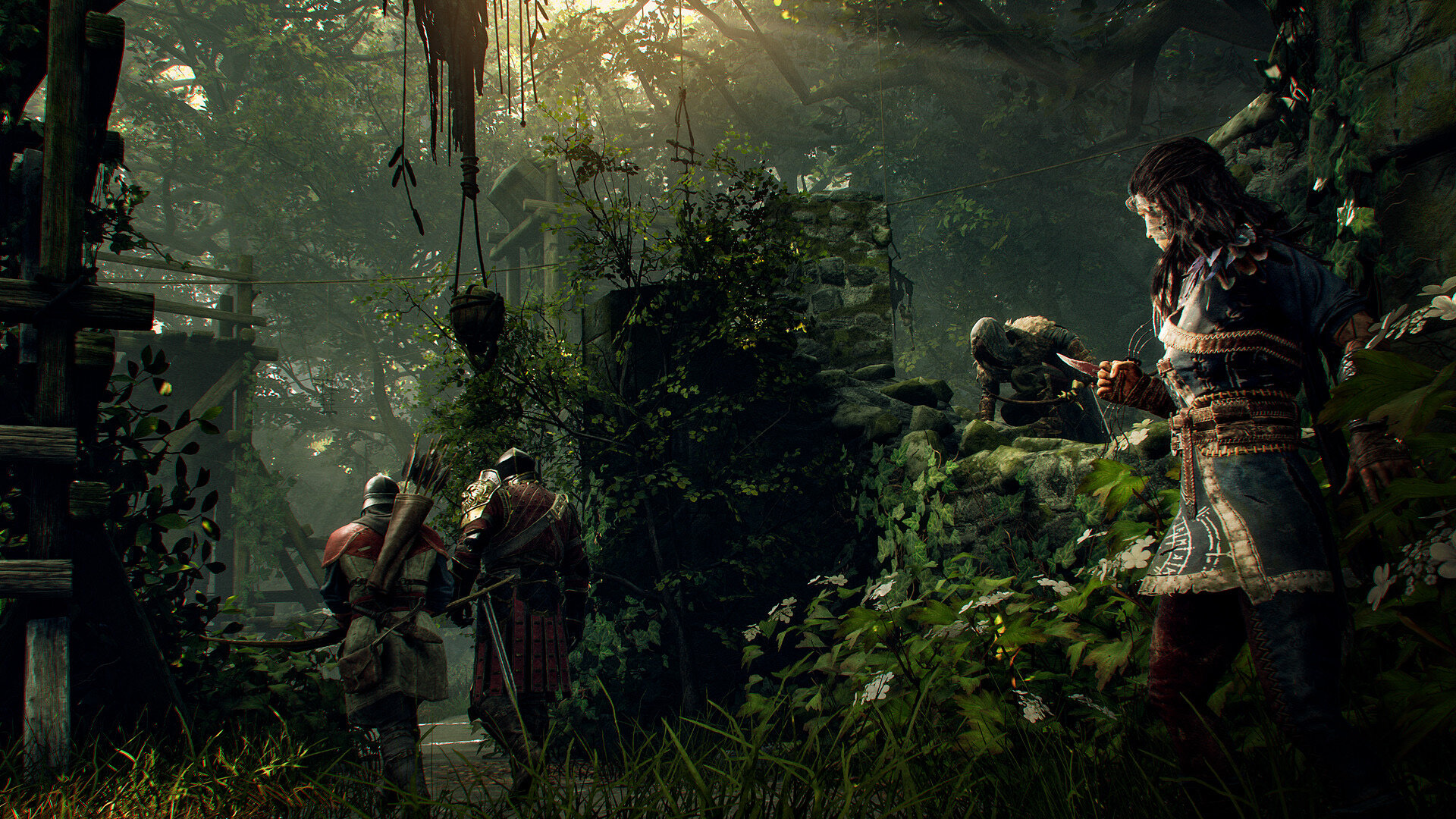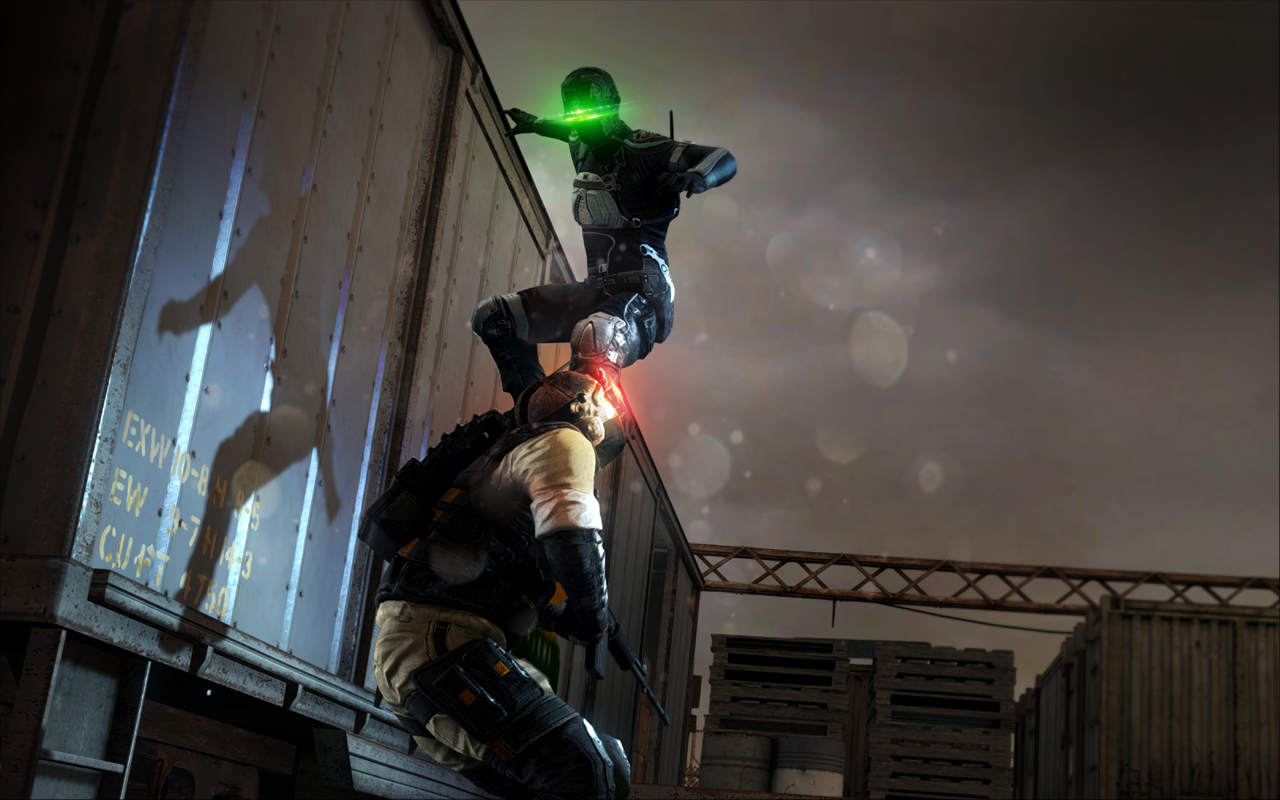The Unspoken Rules of Stealth Games
I love stealth games. They are my absolute jam. I’ve been an Assassin’s Creed acolyte from the beginning and Splinter Cell rests firmly atop my list of favorite franchises. The industry isn’t flooded by this genre, but there are a fair number of quality contenders. The Dishonored games are a tour de force, I love the critically mixed Deus Ex prequels deeply, I only play Far Cry with my knife and bow, Ghost Recon is a kind of comfort food, even in Uncharted 4 I avoided combat in favor of being a sneak. In fact, really the only thing I like more than stealth gameplay is cooperative stealth gameplay (though I am a sucker for tactics games). There is just something about clearing a room with a friend, no enemy wise to your presence. Splinter Cell has brilliant co-op. Far Cry is at its best when your crew chooses the silent approach, one friend getting dirty up close with a blade while a ranger picks off sentries, putting arrows between armor plates.
Most stealth games though, avoid multiplayer completely. I frequently lament that I can’t take out targets as agents 47 and 46. Most of these games, to me, feel like they would be better with a friend. Now a part of that is certainly because most things are better with friends but, secondarily, these games are difficult. Having a friend to help could both ease the game of chess you play in every encounter or allow creators to add differing levels of complexity.
I could talk about the possibilities for, maybe literally, days. But that’s not what I’m here to talk about. At least not today. If very few stealth franchises build out co-op experiences, a fraction of those games create adversarial multiplayer. Splinter Cell has tried it. Spies vs Mercs, a mode that pitches Splinter Cell agents against NPC-esque mercenaries, leverages darkness and verticality against mercs with flashlights. It’s, as I previously described, brilliant. By pitting factions against each other with different abilities to navigate the gamespace, adhering to the stealth game loop is the only thing that gives the spies an advantage.
Assassin’s Creed also dabbled in multiplayer. Both PvP and PvE. The latter, while promising, fell victim to the extremely buggy launch of Assassin’s Creed Unity. Network issues, net code issues, strange pop-in, the experience was fractured from the start. The former, PvP variant, was introduced with the release of AC Brotherhood. Across a handful of game modes, and choosing between an impressive lineup of characters, players hunted each other down across crowded maps utilizing a number of distractive, offensive, and defensive abilities.
The Brotherhood multiplayer was great in the first few weeks, but as time progressed players became savvy to the underlying systems and within months of release the idea of “Stealth” all but disappeared. The reasons, I believe, are perhaps why so many stealth games leave this feature off of the list: Balance and participation.
A few weeks ago Hood: Outlaws and Legends came out and a group of friends and I grabbed it up. At only thirty dollars it was kinda hard not to just grab it and give it a shot. Hood takes place in the Robin Hood universe (mythos?) and tasks players to cooperatively - stealthily - infiltrate an area, track down the Sheriff, pickpocket a vault key from him, and then abscond with the loot in said vault. It’s like Payday with a bow and arrow.
Pulling off these heists is actually pretty fun. The PvE (versus AI only) mode allows you to dig into the mechanics of the game while working out the kinks in your team communication. Before long we were complimenting well placed shots and perfect dual takedowns as we carved our way to our prize. The formula is solid, if a bit repetitious. The requirements don’t change at all between maps. The location of the vault chest will move around from heist to heist, but that is really it; and after a few rounds we had grown a bit too familiar with the process. The game also randomly chooses the maps in this mode, so we ended up playing two maps in three games, which was a bit of a bummer. Also your XP gain is dramatically limited in this AI centered mode, which pushed us quickly into the game’s core mode: heists against competing human players.
The formula doesn’t really change for this PvPvE mode, save the fact that at the same time you are hunting for the Sheriff, his key, and then the vault, another team is as well. Initially the prospect of this dynamic was interesting, but pretty quickly it devolved.
This was when I realized multiplayer stealth is critically dependent on its players participating in the right way. Now some games incentivize this participation or choose to restrict your abilities altogether. Think AC: Brotherhoods scoring system for kills which took points from you for being loud or conspicuous. Spies vs Mercs restricts teams abilities based on their faction. Mercs literally cannot hide in the dark. Spies will not win a gunfight.
Hood doesn’t really build any advantage or disadvantages into its gameplay loop. We started our first round of PvPvE and began to sneak around the map the same way we were in the PvE mode. Being seen by guards locks the area you are in down. They close all the gates and begin hunting for you. Against AI this was a paradigm shift. The whole group has to go into ghost mode or just shelter in place until the heightened awareness drips away with the invisible clock. In multiplayer you get notified if your opponents incur a lockdown. This is done presumably to give you a brief jolt of encouragement. Thoughts dart across your mind, “They are locked down, they got caught, we have a few minutes to creep ahead and really gain an advantage.
Only that wasn’t the case.
Ryan and I stopped playing the Brotherhood multiplayer a few months in. It was nearly impossible to play the game by its own rules. Shooting a target with your wrist mounted pistol was always the worst way to pull off a kill, but useful if your target just kept evading you. You received a meager serving of points and would move back into the crowd in an attempt to reestablish yourself as an agent of stealth. By the end of the first month people were sprinting across rooftops, shooting down into the crowd, and then running off to do it again. They had discovered that if you ran around on the rooftops it didn’t raise your profile and that picking off a target from a rooftop with a gun, the penalty wouldn’t be enforced unless you killed a second target. First kills in this method would rack around 1800 points, the second kill a measly 300 (the numbers may be way off here, its been years. It’s the proportion that’s important.
The second kill was the system working, discouraging loud tactics with point penalties. But if you went and hid, let the system time out, and then did it again, you could farm high point value kills in perhaps the least clandestine way possible. Brotherhood became a shooting gallery. It was absolutely untenable. Assassin’s Creed would get away from adversarial multiplayer after Black Flag. I barely returned for Revelations.
As we were creeping through the bushes in a castle courtyard, our band of merry thieves, we got the first notification that our opponents had triggered an alarm. A wave of relief hit the crew. We’ve got some time. Then the second notification came, then the third, then a fourth. Our relief was subsumed by a revelation: they are just ignoring the stealth altogether. What followed was a painfully reminiscent race to the objectives ignoring area guards altogether (If a gate got dropped each team had a character that could just lift the gate). Our opponents got the key first, found the vault first, and moved the prize first. Each time we got close we were either picked off by a camping Robin, thatching us through the reeds with pinpoint accuracy, or we got bodied by the two melee characters Tooke and John.
Dying, spawning, and running back to the objective is a drag in any game. In a game where you have to make a getaway, every second you have to run back to the last place you saw the objective is a second of distance they get to make. Combat felt clunky and secondary to a stealth system that had been completely abandoned. Knowing that your opponent trips an alarm is incredibly useful, but knowing when they got the key, that they had found the vault, and having a tracker for how far the chest was moving was a bit much. I kept thinking about how much cooler it would have been if we had found the Sheriff only to discover the key was already gone. Imagine coming across a vault that had been looted already, your team scrambling desperately to find out how far their opponents had gotten.
Still, none of this works players don’t abide by an invisible set of rules, therefore relying on those rules just ends up feeling like a mistake. A private lobby with eight people, all who agree to be stealthy is one thing, hoping that the community at large adopts that mindset is, ever more clearly, dependent on systems. The question is, in an industry that builds to player’s fantasies of power, how do you implement these systems and simultaneously empower players while also guiding their play-style along the path you desire?
How do you penalize running around like Rambo adequately? How do you incentivize stealth to make it the only way players want to engage?
@LubWub
~Caleb





